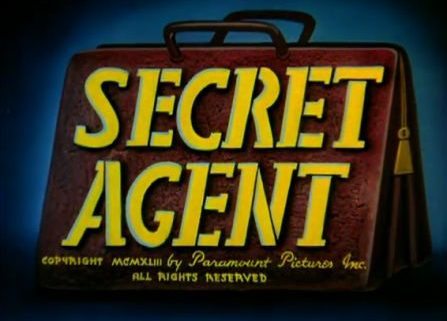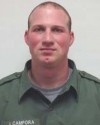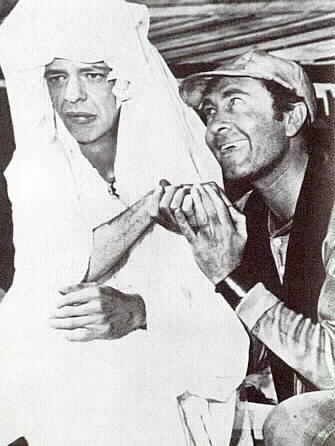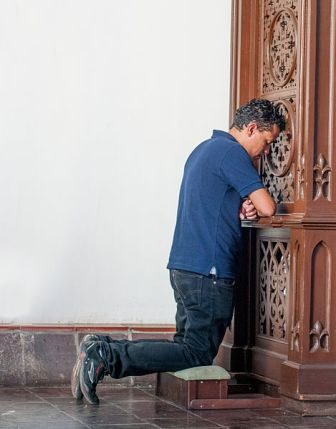I recently published an academic article about cold cases that featured the investigation of a family mass murder from 1959. This past December, the unsolved case had launched the exhumation of Dick Hickock and Perry Smith, the infamous killers of the Clutter family as featured in Truman Capote’s In Cold Blood.
My co-authors were Sally Keglovits, an expert on the Clutter case, and Gregg McCrary, a former FBI profiler who has taught seminars on cold case investigations.
To summarize, in 1959, all four members of the Walker family were killed in their home near Sarasota, Florida. During the half-century that has passed, numerous suspects were considered. Among them were drifters Dick Hickock and Perry Smith, who’d murdered the Clutters in Kansas the month before and who’d been in Florida during the time of the Walker assault. Their denial, supported by polygraphs and fingerprint comparisons, eliminated them.

However, in December 2012, they were exhumed from their graves in Kansas. Detective Kim McGrath had inherited the Walker case investigation and she’d zeroed in on Hickock and Smith as the most viable suspects. She hypothesized that Hickock had met the family in town and decided to rape Christine Walker, so he went out to their house and killed the whole family.
“I think my gut tells me that we’re on the right track,” McGrath stated. With her details in an affidavit, Florida officials persuaded the Kansas Bureau of Identification to exhume the remains and extract DNA for comparison with DNA from the scene. For some reason, this affidavit was sealed.
Still, some details were offered to news media. The case for exhumation seemed to have been made with a few items of class evidence and sketchy eyewitness memory, neither of which provides much substance. Reports also indicated that an unidentified polygraph analyst had dismissed 1960s-era polygraphs, so this had dissolved one hindrance to reconsidering Hickock and Smith. In light of more precise DNA analysis techniques, law enforcement decided that an exhumation was justified.
The samples were sent to a lab in Kansas last December, and a week ago, the KBI announced that the results were inconclusive. Thus, the Walker case remains open.
Since Hickock and Smith were not the only possible suspects, or the best, we wondered why they’d been singled out. As we looked at the available facts of the Walker case, we thought that still-viable candidates had been overlooked.
The decision to go forward with a cold case investigation, according to Gregg McCrary, is based on assessing likely risks and consequences to the community. These consequences may include the level of risk for additional violence if the violent offender(s) are at large, but they also include pragmatic considerations, such as a cost projection that includes methods, objectives, and manpower needs.
Costs are weighed against the probability of success, which depends on solvability factors, such as a good suspect, witnesses with new information, new evidence, or a once-intact relationship that has broken up. In some cases, new technologies can move a case up the solvability scale, as can something that was not utilized in the original investigation.
Top priority cases would have well-developed suspects and preserved evidence on which a new technology can be used. Cases with many unknowns, or those with high expenses and little foreseeable payoff, are relegated to the lowest priority.
So, during our research, we were puzzled that the news articles we found seemed to accept the viability of this exhumation without much probing. For example, I asked several reporters who the “expert” was who’d dismissed polygraphs from the 1960s. No one seemed to know. They also didn’t know if this expert had actually seen the polygraphs done with Hickock and Smith. Yet they accepted the “expert opinion” as reliable.
Even a friend of mine in forensics stated in print that evidence against Hickock and Smith was “good,” although he hadn’t seen the affidavit or evaluated the case. He’d read a reporter’s opinion.
I asked a Florida-based reporter whether the cost of such an investigation had been disclosed to the public, since I knew it would be considerable. She didn’t understand why cost was relevant. I sensed that she hadn’t researched cold case protocols and/or did not view herself as a protector of public interest.
Thus, as we researched the case ourselves and decided there were too many holes for a coherent narrative, let alone enough support for a double exhumation, we also noted the lack of probing journalism. It seemed to us that few reporters had tried to get the affidavit unsealed or had evaluated whether a detective’s “gut feeling” about the evidence supported the costs. There would be stonewalling by law enforcement, or course, but doesn’t good journalism demand finding ways around this?
Sally Keglovits’ father had been a crime reporter for many years, so she’d witnessed investigative journalism at work on a regular basis. “He believed that having a relationship of mutual respect does not preclude the press from asking the tough questions and demanding full information,” she said. “I remember hearing about a press conference where the police tried to escort him out of the room because he kept asking questions they didn’t want to answer.”
She spoke with several reporters, some from small papers and others from outlets with the clout to expose secrecy and demand details. She was surprised by the lack of assertiveness. Most published reports had just incorporated information from other publications – an easy thing to do in the Internet age.
“Journalism is not about accepting press releases as source information!” Keglovits asserted. “This is the fatal error in the Walker investigation. Interviews with lead detective Kim McGrath seemed little more than giving her an opportunity to expound on her beliefs. I didn’t see evidence of probing, follow-up questions about the investigation, such as why the affidavit was sealed or how to make sense of items that did not support the theory of Hickock’s involvement.”
Regardless of whether this investigation could have become a significant story, we were mystified by the passive acceptance of locked doors and vague data. There were many opportunities to at least try to dig deeper. Some journalists to whom we spoke were frustrated, to be sure, but most seemed to just accept the press statements from law enforcement.
Even with “inconclusive” results, we still want to know why this exhumation was worth the cost and effort. Surely NOW the affidavit can be unsealed. Citizens of Sarasota and relatives of the Walkers aren’t the only ones with an interest in this case. Anyone who has read In Cold Blood wants to know.
* * *

Dr. Katherine Ramsland is a professor of forensic psychology at DeSales University in Pennsylvania, where she also teaches criminal justice. She holds a master’s in forensic psychology from the John Jay College of Criminal Justice, a master’s in clinical psychology from Duquesne University, a master’s in criminal justice from DeSales University, and a Ph.D. in philosophy from Rutgers. She has been a therapist and a consultant. Dr. Ramsland has published over 1,000 articles and 46 books, including:
Snap! Seizing Your Aha Moments
Paranormal Forensics
The Mind of Murder a Murderer: Privileged Access to the Demons that Drive Extreme Violence
Inside the Minds of Serial Killers
The Forensic Psychology of Criminal Minds
The Forensic Science of CSI
The Criminal Mind: A Writer’s Guide to Forensic Psychology
True Stories of CSI
Beating the Devil’s Game: A History of Forensic Science and Criminal Investigation
Inside the Minds of Healthcare Serial Killers
Inside the Minds of Mass Murderers
The Human Predator: A Historical Chronology of Serial Murder and Forensic Investigation
Psychopath
The Vampire Trap
The Ivy-League Killer
Piercing the Darkness: Undercover with Vampires in America Today
Dr. Ramsland’s background in forensics positioned her to assist former FBI profiler John Douglas on his book, The Cases that Haunt Us, to co-write a book with former FBI profiler, Gregg McCrary, The Unknown Darkness, to collaborate on A Voice for the Dead with attorney James E. Starrs on his exhumation projects, and to co-write a forensic textbook with renowned criminalist Henry C. Lee, The Real World of a Forensic Scientist.
For seven years, she contributed regularly to Court TV’s Crime Library, and now writes a column on investigative forensics for The Forensic Examiner and a column on character psychology for Sisters in Crime; offers trainings for law enforcement and attorneys; and speaks internationally about forensic psychology, forensic science, and serial murder. She has appeared on numerous cable network documentaries, as well as such programs as The Today Show, 20/20, Montel Williams, NPR, Larry King Live and E! True Hollywood. For ID, she spoke as a recurring expert on the series, American Occult and Wicked Attractions.






















































